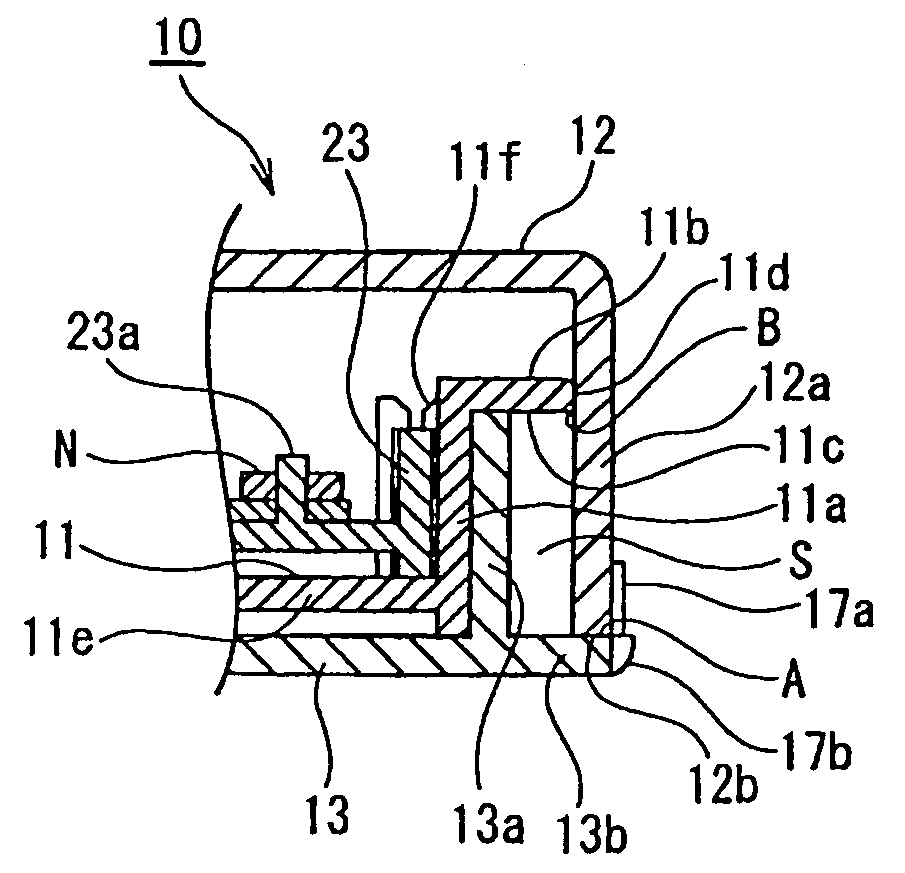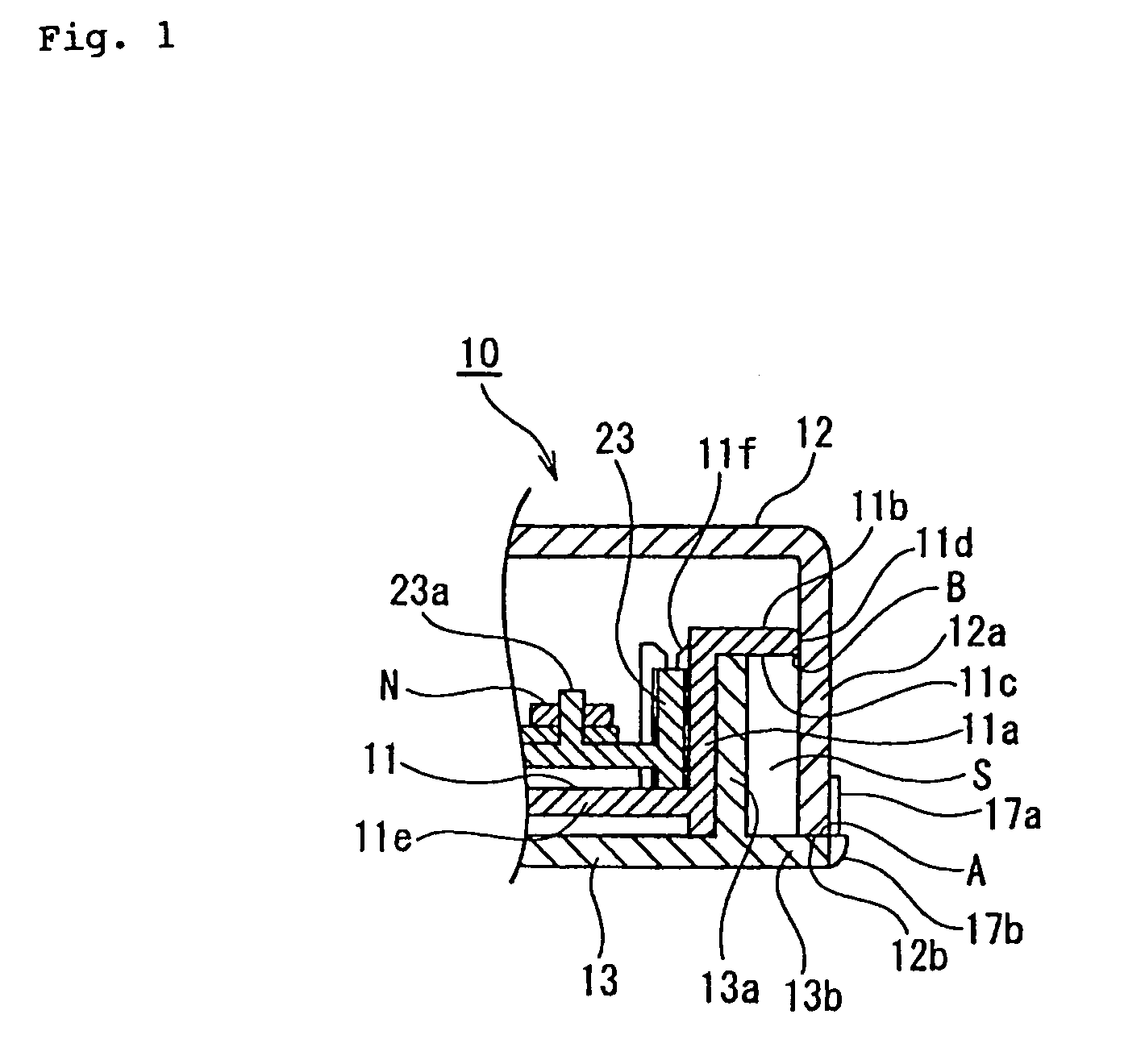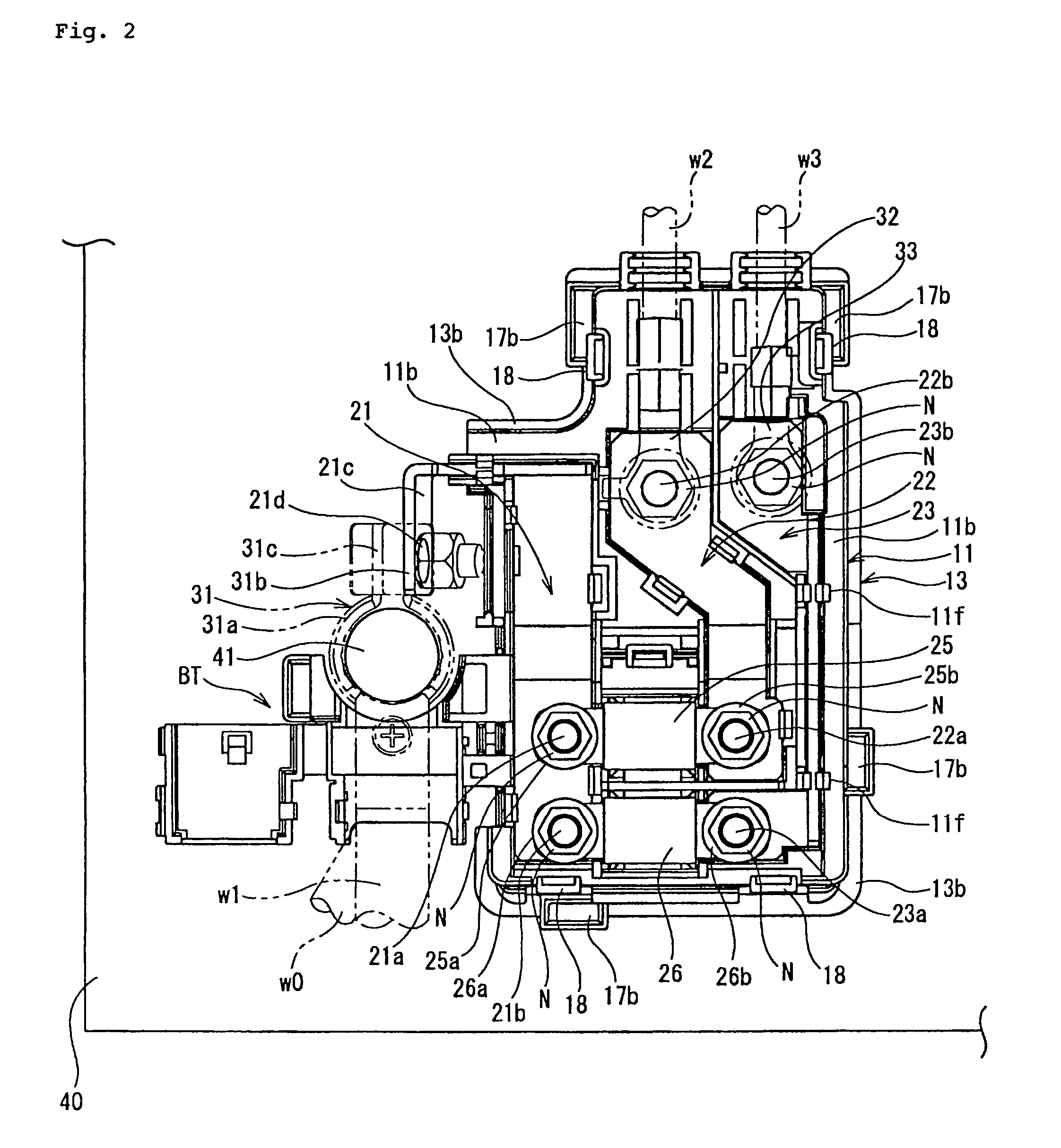Fuse box
a fuse box and watertight technology, applied in the field of fuse boxes, can solve the problems of water not passing through the slight gap the inability of the second watertight portion to pass through the second watertight portion, etc., to achieve the effect of reliable waterproof function, improved fuse box layout, and improved waterproof function
- Summary
- Abstract
- Description
- Claims
- Application Information
AI Technical Summary
Benefits of technology
Problems solved by technology
Method used
Image
Examples
first embodiment
[0023]FIGS. 1 through 5 show a fuse box 10 of the present invention. The fuse box 10 has a case body 11; a plurality of bus bars 21, 22, and 23 provided on the case body 11; fusible links 25, 26 connected with the bus bars 21, 22, and 23; and an upper cover 12 and a lower cover 13 mounted on the case body 11 to cover the upper and lower surfaces thereof, with the case body 11, the upper cover 12, and the lower cover 13 connected with one another. The fuse box 10 is mounted on a battery box 40.
[0024]More specifically, as shown in FIG. 2, one input-side bus bar 21 and two output-side bus bars 22, 23 are disposed on an upper surface of the case body 11. An input terminal 25a of the fusible link 25 and an input terminal 26a of the fusible Ink 26 are fitted on bolts 21a, 21b respectively projected from one side of the input-side bus bar 21 and fastened to the bolts 21a, 21b with nuts N respectively. An output terminal 25b of the fusible link 25 is fitted on a bolt 22a disposed at one sid...
second embodiment
[0041]In the second embodiment, the pressure-reducing gap S and the first watertight portion A and the second watertight portion B sandwiching the pressure-reducing gap S therebetween are disposed at positions on the periphery of the portion where the fusible links 25, 26 requiring a high degree of waterproofness are disposed. Therefore it is possible to constantly secure the waterproofness necessary for the fuse box 10. By not providing other peripheral portions with the waterproof mechanism, it is possible to improve the layout of the fuse box 10 and make it compact.
[0042]FIG. 8 shows the third embodiment of the present invention. The third embodiment is different from the first and second embodiments in that the fuse box of the third embodiment does not have the loner cover and that the waterproof mechanism is constructed of the upper cover 12 and the case body 11.
[0043]More specifically, the lower end surface 12b of the peripheral wall 12a of the upper cover 12 contacts the uppe...
third embodiment
[0044]In the third embodiment, although the lower cover is not provided, the pressure-reducing gap S sandwiched between the first watertight portion A and the second watertight portion B is formed between the peripheral wall 12a of the upper cover 12 and the peripheral wall 11a of tie case body 11. Therefore, the pressure-reducing gap S disperses water which has penetrated into the fuse box at a high pressure from the first watertight portion A and reduces the pressure, thus preventing the water from penetrating into the case body 11 from the second watertight portion B.
PUM
 Login to View More
Login to View More Abstract
Description
Claims
Application Information
 Login to View More
Login to View More - R&D
- Intellectual Property
- Life Sciences
- Materials
- Tech Scout
- Unparalleled Data Quality
- Higher Quality Content
- 60% Fewer Hallucinations
Browse by: Latest US Patents, China's latest patents, Technical Efficacy Thesaurus, Application Domain, Technology Topic, Popular Technical Reports.
© 2025 PatSnap. All rights reserved.Legal|Privacy policy|Modern Slavery Act Transparency Statement|Sitemap|About US| Contact US: help@patsnap.com



